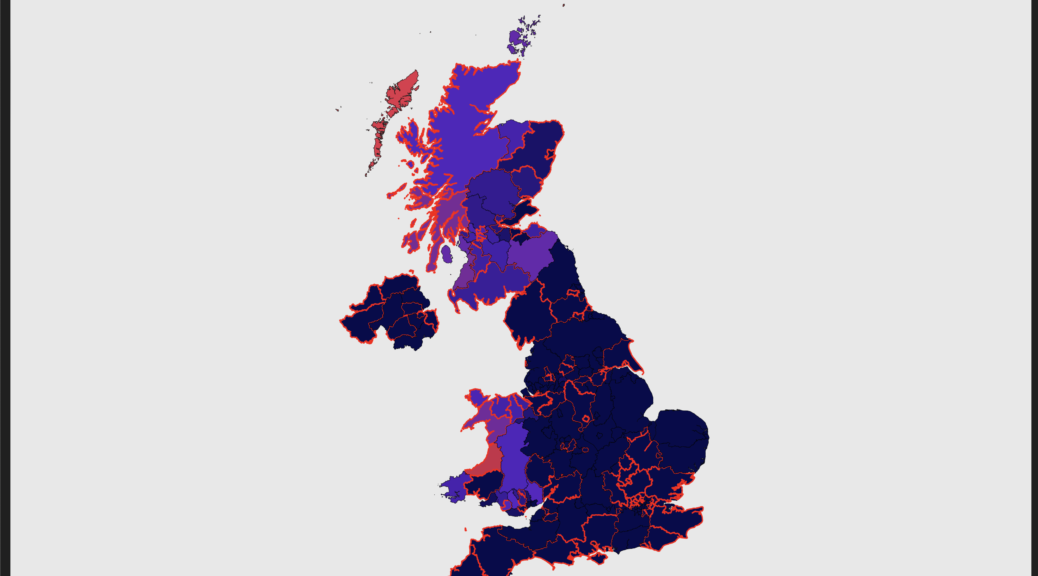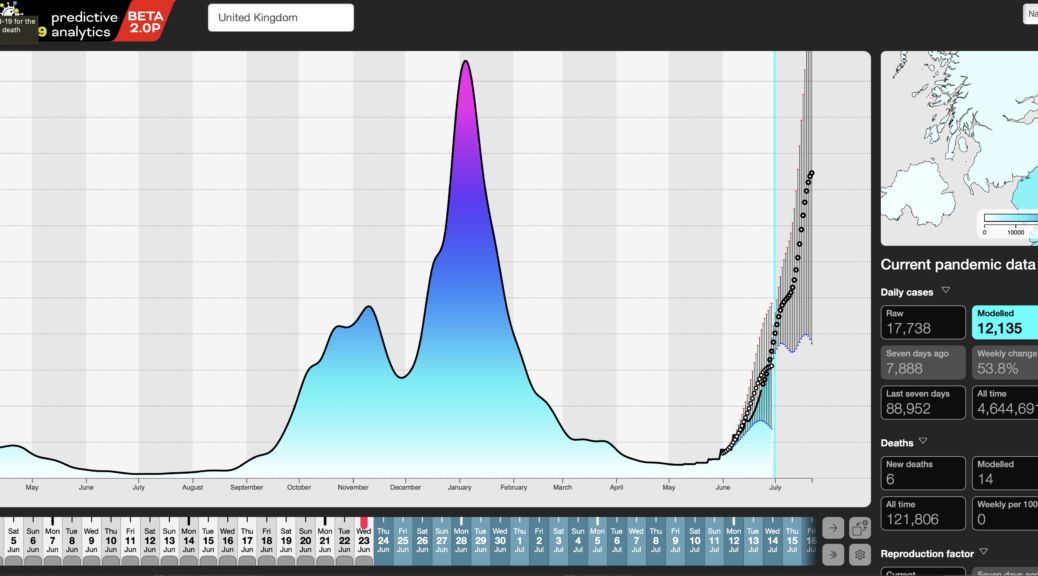The UK’s ‘Prime Minister’ stood up in Parliament today and stated that “Provided the current encouraging trends in the data continue“, Covid-19 restrictions in England would be lifted by the end of the month. At Intelligent Reality, we’re not entirely sure to which data he refers – possibly those from his home dimension? In looking at the published official data, we’re coming to rather different conclusions.
Tag Archives: forecasting
How accurate are our forecasts?
Taking the current rise in infections as an example, our analytic system has, consistently been able to forecast changes in the Covid-19 pandemic across the UK – we started with 14-day forecasts and have now pushed those out to 28 days. We made that change as we improved our algorithms, validated our earlier forecasts and, of course, as our system has had more historical data to work with, it’s got somewhat better at its job.
To validate the forecasts, we measure their daily predictions against what subsequently transpired – these can be displayed in our dashboard by clicking the grey tabs below each date in the horizontal date picker at the bottom.
For that period then, we have forty four 28-day hindcasts, plus the current forecast, from 24 June (today being the 30th – the lag is down to the rolling evolution of data quality for recent days).
For the UK, on thirty six of those forty four days, our forecasts generated a trajectory that closely matches the subsequently recorded change in case numbers, by which we mean effectively tracked the actual case numbers for at least two weeks into the 28-day forecast. We call those Actionable forecasts, in that they’ve proven accurate enough to confidently have taken policy decisions against.
Our header image shows the current forecast for the UK, overlaid with our hindcast for our forecast from 1 June. We think that speaks for itself.
Early Warning Onwards
The UK government stated yesterday (13 May) that rising case numbers in the Bolton area were a cause for concern, and that very many of these cases were of the so-called ‘Indian’ variant (B.1.617.2 being the designated variant of concern, with B.1.617.1 and B.1.617.3 under investigation). Here, raw data for case numbers has been available for weeks, with organisations such as the Sanger Institute also providing a very informative breakdown by sequenced variants.
Our analytics platform had identified Bolton and other areas as potential concerns more than two weeks ago and had flagged a correlation between these hot spots and the ethnic balance of the local population, such that, even in the absence of cross-border travel data, of the emerging variants or the situation in India, we were able to provide early warning of emerging problems.
Which very much begs the question as to why the UK government only raised this yesterday, and why travel restrictions from India were only imposed long after the pandemic reached critical mass there. Continue reading Early Warning Onwards


